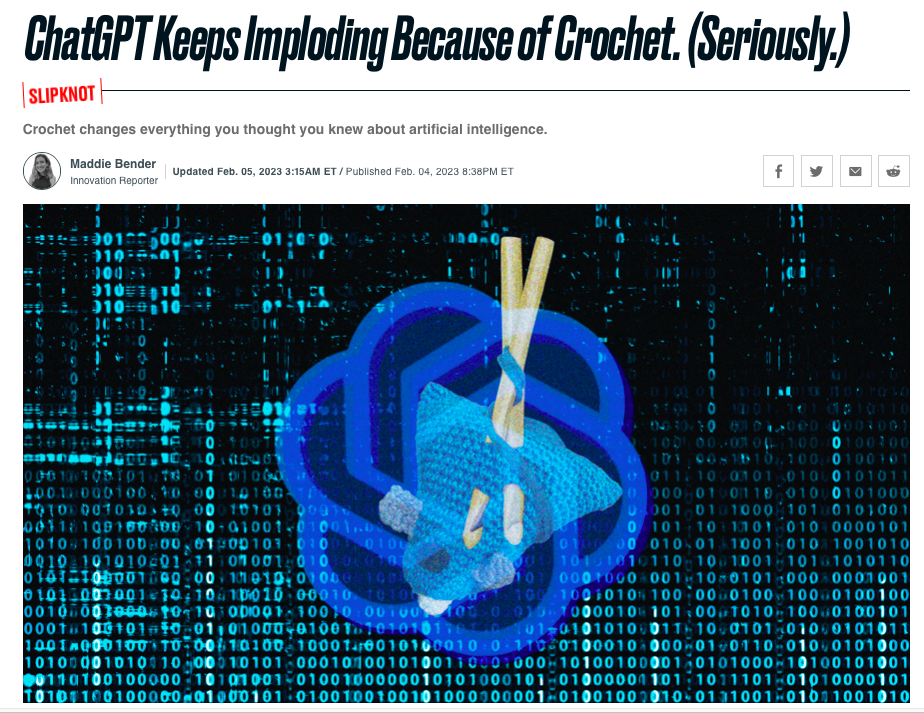Does AI Understand Crochet?
The newly infamous AI program ChatGPT has been asked to create crochet patterns and it’s terrible at the task. Although it can mimic what, at first-glance, appears to be legitimate crochet code, the objects it describes are often physically un-makable. This is an interesting case of the limitations of the new AI systems based on “large language models” or LLM’s. In the case of crochet and other craft code-systems, symbolic codes have meaning because they describe how something material can be constructed. ChatGPT and its ilk have no conception that the codes they’re writing here must literally make sense. I discuss this dichotomy for an article in the Daily Beast, and describe the difference here between “sense” and “sense-ability.”
Daily Beast article by Maddie Bender: “ChatGPT Keeps Exploding Because of Crochet”
Excerpt: “And crochet has arguably more in common with math than any other art form. Like mathematics, knitting and crochet patterns are not written in full words that an AI can interpret, but rather a coded shorthand. One- and two-letter abbreviations stand for different stitch types, and without a key, the overall result looks like a string of gibberish.
“Anyone who reads a knitting pattern immediately is reading a code at a pretty sophisticated level,” Margaret Wertheim, a science writer and artist, told The Daily Beast. Wertheim and her twin sister run The Institute For Figuring—an organization at the intersection of aesthetics, science, and math—which is perhaps best known for a vast project of crocheted coral reefs.
Wertheim believes that AI like ChatGPT falters when designing crochet patterns because its outputs lack two factors she calls sense and sense-ability (no, that’s not a misspelling).
Sense describes the bot’s ability to produce a coherent pattern. Generally, ChatGPT creates instructions that can be followed but require some revision to prevent nonsensical errors, like when it asked Woolner to crochet one fin for Gerald then attach the fin “on either side of the body.” (She wound up making two fins.)
Sense-ability, on the other hand, is the knowledge that the pattern is meant to create a physical object. ChatGPT, however, creates instructions without knowing what the abbreviations stand for; it also has no concept of how the instructions will be used.
Sense (the pattern on the page) and sense-ability (the narwhal in your hands) might sound like fresh terms, but you’ve seen and used them when you learned basic algebra. Recall that the equation for a straight line is y = mx + b. Much like a crochet pattern, these symbols on a page (sense) make sense on their own and tell you what a final product will look like—in this case, a two-dimensional line (sense-ability). (Though it is vastly more difficult, if not impossible, to visualize the end product from looking at a crochet pattern’s written instructions.)
Without sense and sense-ability, ChatGPT and its ilk can’t comprehend crochet. “I think it’s going to be a long time before the AIs are going to be capable of producing something that is actually a useful, interesting crochet pattern because they just don’t have a sense of the thing ultimately being an object in physical space,” said Wertheim.
